Sindh govt to begin work on Red Line Bus Project
Officials expect the project will be completed by 2021

PHOTO: pcq.com.pk
The provincial government expects to complete the project within two years, by 2021.
The Red Line project includes the construction of a 29.1-kilometre-long corridor- a 24.4-kilometre-long passage will be constructed from Malir Halt Depot to Numaish and another 2.4-kilometre-long passage will connect Municipal Park to Merewether Tower. Sindh Mass Transport Authority and Trans Karachi Company have been given the responsibility to oversee the project's construction, security, maintenance and operation.
Reportedly, Sindh Government will spend $88 million on the project, while the Asian Development Bank (ADB) and other financers will contribute $474.321 million to the project's overall cost. The procurement phase of the project will last from March 2019 to the middle of 2021.
Proposed Red Line BRT to connect Model Colony with Numaish
Buses and route
As many as 29 stations will be constructed along the route of the Red Line project, 24 of which will be main corridor stations and remaining 5 will be joint corridor stations. The main BRT lane will be 3.5-metre-wide and the gap between the stations along this lane will extend from 0.3 metre to 0.6 metre. Sidewalks, 1.2 to 3-metre-wide, will also be constructed along the BRT lane.
The BRT fleet will comprise 199 vehicles, including 19 buses extending to nine metres in length, 134 buses extending to 12 metres in length and another 46 buses which will be 18-metre-long. The project will also include two trunk services running along the length of the main BRT corridor.
Opportunities for employment
According to an estimate, the project, once completed, will offer employment to as many as 2,118 individuals. This will include 1,424 jobs pertaining to station services, security and cleaning services. It is also projected that the Red Line project will offer 615 jobs related to bus operations and will result in the creation of 79 new job vacancies at the Trans Karachi Company.
Almost seven per cent of Karachi's population, amounting to a million, is residing nearby the Red Line corridor. It is expected that about 20,000 of these residents will get employment after the Red Line project is materialised.
Sources of income
Revenue from the Red Line BRT project will be generated in the form of fares from passengers, rents from shops and earnings in return for services offered at the stations and through advertisements.
It is estimated that during 2021, the first year of Red Line bus service's operation, fares from passengers will make up the major chunk of the revenue collected from the project, amounting to approximately $19.47 million (Rs2,686 million). The estimate is based on the assumption that Rs35 will be earned from each passenger on a single trip.
Similarly, the revenue to be generated from advertisements is estimated at $2.26 billion (Rs365 million) annually. This will account for 10 per cent of the total revenue generated from the Red Line BRT project.
It is also estimated that the rent collected from shops at the stations will be $ 4.35 million (Rs600 million) annually. This calculation considers commercial rents rates for per square metre. Additionally, it is also expected that the rents collected from shops would suffice to meet the operational and maintenance cost of the project as well as buy new buses to replace the old rundown ones.
Contracts will be given to different companies for services, such as cleaning and security, offered at the stations.
Financial analysis
The financial analysis of the project is based on four asumptions: purchasing local biofuel on 25 per cent margin; purchasing biomethane from local companies on 30 per cent margin; importing biomethane and compressed natural gas (CNG) on 25 per cent margin; and importing CNG on 30 per cent margin.
If CNG is purchased on commercial rates, then cash flow is expected to be 25 per cent instead of 30 per cent. Also, if locally produced CNG, from biofuel, is purchased to run the buses, entire cost of the project will be recovered and it will engender better financial results. In light of this analysis, locally prepared biofuel is suggested to be the preferred option to run the buses.
Drainage System
Keeping in view the potential flooding caused during rainy season in Karachi, additional funds have been allocated for the construction of a drainage system. Also sidewalks along the BRT lane will be tiled allowing the flow of excess water outside the track. Plants will be bedded along the track, which will absorb a considerable amount of excess rainwater.
Sindh seeks ADB's help to launch Red Line BRT, other projects
Arrangements will be made for pedestrians to cross the road so that there is no threat of any accident.
Depots
Sindh Government's land in Malir Halt and near Mausamiyat will allocated for the construction of depots where BRT vehicles could be parked. Apart from this, land for the construction of offices for vehicle operating companies and service areas for washing the buses will also be provided by the government.
Security
To monitor the BRT corridor all throughout the day, CCTV cameras will be installed along the track, inside the buses and on stations as well. Sensitive spots, particularly cabins where fares will be collected, will be monitored 24/7 through these CCTV cameras.
Apart from this, all items in possession of passengers will be thoroughly checked by security officials and there will be separate queues for women. There will also be a separate compartment inside the bus for women passengers.
Resettlement
Although, no private land will be acquired for this project but around 925 individuals will be displaced for the Red Line project. The construction will also affect 293 shop owners and 80 institutions, both private and public. Additionally, 493 small traders will have to shift their businesses elsewhere. It is estimated that structures which will be affected by the construction of Red Line project include 207 semi-permanent structures and 86 permanent structures. These structures also include power generators and sign boards.
Published in The Express Tribune, June 11th, 2019.

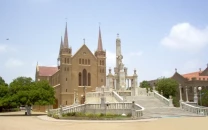
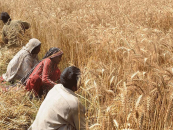
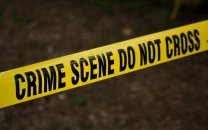
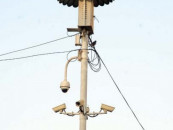
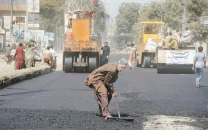













COMMENTS
Comments are moderated and generally will be posted if they are on-topic and not abusive.
For more information, please see our Comments FAQ